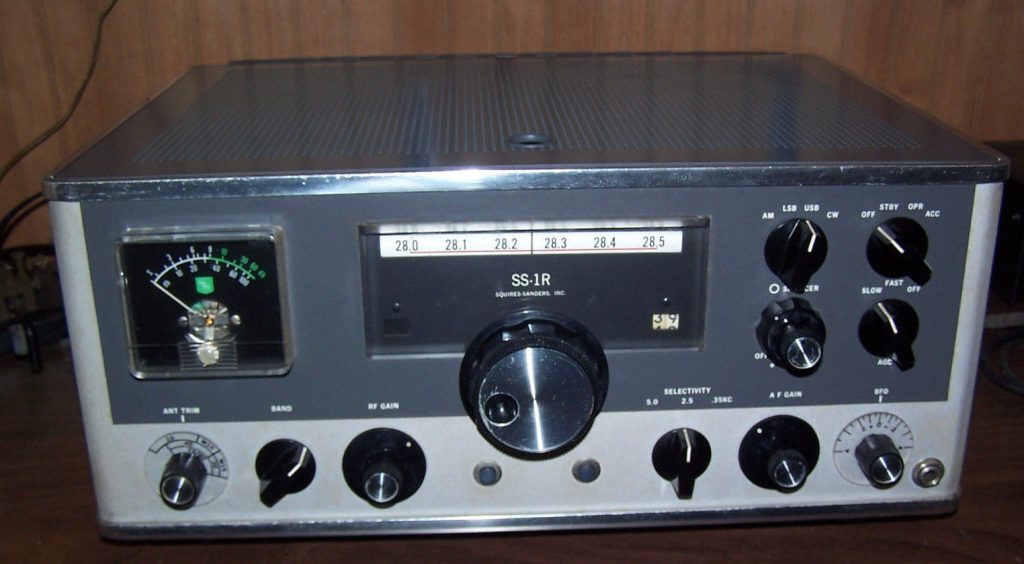 Many thanks to SWLing Post contributor, Dan Robinson, who shares this recent find on eBay and notes:
Many thanks to SWLing Post contributor, Dan Robinson, who shares this recent find on eBay and notes:
Extremely rare Squires Sanders on Ebay….amateur receiver….only the second time in recent years one of these radios has come up on the used market…
I was not at all familiar with this ham band receiver, Dan. I like the unique analog two digit log/frequency display below the main dial. Looks to be pretty clean, though the seller notes that this is an estate item and has not been tested. A buyer would have to assume the cord and, most likely, a few capacitors will have to be replaced.

Hola Colegas , Soy Raul LU4DAJ de Buenos Aires Argentina.
Actualmente poseo un Receptor “Squires Sanders SS-1R” el mismo esta en optimas condiciones tanto estéticamente como en funcionamiento nunca supe como llego a mi país.
aparentemente es el único que a llegado a la Argentina.
me gustaria conseguir el manual o una copia del original , hace un tiempo e estado buscando sin resultado alguno.
agradecería si alguien lo posee ,si me podria facilitar una copia.
Saludos 73s DX.
Adalberto Raul Olivera
LU4DAJ
[email protected]
whatsapp : +54 11 22276473
It’s legendry because it leaped forward in receiver design, at least at the amateur level, and there was the article in QST in 1963 by Squires about the design. So lots of people knew about the design, even if they weren’t owners.
There’s no RF amplifier, the antenna feeds the mixer trough a tuned circuit. There’s a q-multiplier on that tuned circuit, to improve selectivity (q-multipliers were mostly seen in 455KHz IFs). The mixer was a 7360 beam deflection tube, hard to overload, and a balanced mixer, which was likely a first in ham receivers. After, everyone was using 7360s for receiver mixers, at least until good solid state balanced mixers came along.
I keep forgetting that it is still a dual conversion receiver (except for one band), though presumably to avoid other issues while allowing for a fixed 500KHz tuning range.
But the second IF is at 1 or 2 MHz, higher than the usual 455KHz, a sign of the future, though there were already some SSB transceivers with IFs in the HF range.
It does seem a relatively simple design now, but wasn’t fifty years ago.
The ham band version was the “big seller”, the shortwave version maybe offered because they could. It’s not clear if the front end needed changes to cover the SW broadcast bands. But t would have ben an expensive SW receiver, and needing another crystal for each 500KHz tuning segment, a new concept at the time (though a few years later Drake had their SW receivers like that). But that was the trade-off, most receivers did have a 2:1 tuning range, while some were like the R390 , very complicated mechanically and crystals for every band. A subset of 3 to 30MHz meant fewer crystals and a simpler bandswitch but you spent a lot of money for a receiver that wasn’t “general coverage”.
Michael
Holy moley. That is an outstanding piece, with performance that is still hard to match http://www.w1vd.com/SS-1R.html
There is no way to estimate how many Squires Sanders receivers in anything approaching operating condition exist, and I’m not sure how many were manufactured — see Page 322 in the Osterman guide. SS-IBS is listed as very scarce and both are typically unavailable on the used market.